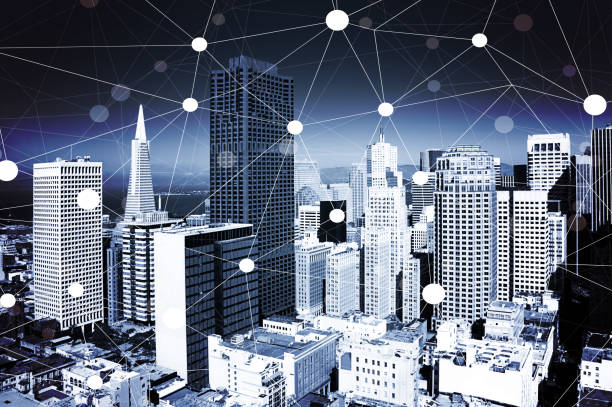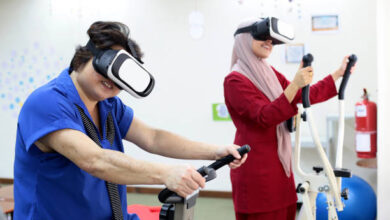
The evolution of technology has rapidly shaped the world around us, affecting virtually all aspects of our lives. One such domain that has witnessed considerable technological transformation is the building industry. A new concept that has recently emerged and is revolutionizing the sector is ‘Smart Building Technology.’ In this blog post, we will delve into the world of smart buildings, dissect their different aspects, explore their association with the Internet of Things (IoT) and Artificial Intelligence (AI), discuss the advantages of their implementation, and also look at the challenges they face and the trends shaping their future.
Understanding the Concept of Smart Building Technology
Stepping into the world of Smart Building Technology is like exploring a well-oiled machine where every operation is automated for optimal performance. It’s a realm where heating, air conditioning, security measures, ventilation, and lighting systems work in harmony, all under the keen supervision of automation.
The primary driving force behind this futuristic technology is a pursuit of efficiency, a desire to reduce energy costs, and a commitment to minimizing environmental impact. It’s like a well-choreographed dance of technology where the end goal is a perfectly tuned environment that not only provides superior comfort and safety to its occupants but also offers operational efficiency to those managing and owning the building.
Picture a building that adapts to your needs, learns your preferences, and operates in such a way that it minimizes wastage while maximizing comfort. That’s Smart Building Technology for you. It’s not just about turning lights on and off at the flick of a switch; it’s about having the entire building at your fingertips, efficiently managed, and geared towards sustainability.
The backbone of this technology is the marriage of traditional building systems with modern automation techniques. The result? A seamless integration that facilitates the building’s capacity to self-manage, reducing the need for human intervention in routine tasks, and freeing up resources for more pressing matters.
So, let’s imagine this scenario: A cold front is predicted to move into the city overnight. A traditional building would have its occupants shivering in the early morning cold until someone manually adjusts the heating. But in a smart building? The system would analyze the weather forecast data, anticipate the temperature drop, and adjust the heating automatically to maintain comfort when occupants arrive.
To put it simply, Smart Building Technology redefines the interaction between occupants and their surroundings, transforming passive buildings into dynamic, responsive entities. So, whether it’s maintaining the perfect room temperature, adjusting the lighting according to the natural light available, or securing the premises, Smart Building Technology ensures it’s all done in the most efficient and effortless way possible.
This technology isn’t just about making our lives easier or more comfortable, though those are definite benefits. At its core, Smart Building Technology is about creating a sustainable future, reducing our energy consumption, and paving the way for an eco-friendly approach to managing our built environment. It’s about rethinking how we use and interact with the spaces around us, making them work smarter, not harder. So, next time you walk into a building, look around and see if you can spot the signs of a smarter, more efficient future.
Different Aspects of Smart Building Technology
When we say ‘smart,’ what exactly do we mean? Let’s peel back the layers to uncover the numerous components that work together to birth a smart building. It begins at the blueprint stage with the careful selection of building materials that not only provide structural strength but also contribute to energy efficiency.
Smart Building Technology isn’t just about what’s inside the building, but also how the building is built. The architecture and design play a significant role in determining how well the building can harness and conserve its resources. Imagine a structure that strategically utilizes natural light, reducing the need for artificial lighting during the day, or a building designed to take advantage of wind patterns for natural ventilation.
But what brings a smart building to life are the systems installed to manage its operations. These systems, usually an integration of Building Automation Systems (BAS) and Energy Management Systems (EMS), are the heart and soul of the building, dictating its rhythms and responses. These systems can encompass a wide range of components, from smart meters that monitor energy consumption to HVAC systems that control the temperature and air quality, and advanced security and fire alarm systems that ensure safety. The wonder of waste management isn’t overlooked either, with systems designed to manage waste in the most efficient way possible.
Think of these systems as the building’s nervous system, consistently collecting data, processing it, and then adjusting the building’s functions accordingly. Just like our bodies, these buildings are responsive entities, adapting to changing conditions to maintain optimal performance.
In a nutshell, transforming a conventional building into a smart one is an intricate dance of diverse elements. It’s about harmonizing architecture, technology, and innovation to create a sustainable structure that’s not just environmentally friendly but also economically efficient and operationally effective. And as we continue to refine these technologies and enhance our understanding of sustainable building practices, our definition of ‘smart’ will only keep getting smarter.
The Role of IoT and AI in Smart Buildings
The symbiotic relationship between Smart Building Technology and the marvels of IoT (Internet of Things) and AI (Artificial Intelligence) can be likened to a high-tech romance. IoT, a vast network of interconnected devices, and AI, the capability of a machine to imitate intelligent human behavior, have lent their impressive capacities to propel the capabilities of Smart Building Technology to unprecedented heights.
In the dynamic orchestra that is a smart building, IoT and AI can be seen as the maestro and the conductor, respectively. IoT plays the maestro by facilitating a seamless communication among devices, allowing them to share information about the building’s operations and performance. These could include data about energy consumption, temperature fluctuations, occupancy levels, security breaches, and even the weather outside.
On the other hand, AI, the conductor, takes this data and interprets it. It analyzes patterns, detects anomalies, makes predictions, and learns from past actions, all with the aim of fine-tuning the building’s operations to improve efficiency, reduce energy consumption, and enhance the comfort of its occupants.
The magic happens when IoT and AI unite, creating an environment where the data from all systems and devices is constantly being shared, analyzed, and acted upon in real time. This enables the building to be more proactive rather than reactive. For example, AI can predict when an HVAC system might fail based on historical data and send a notification for preventive maintenance before a complete breakdown occurs.
Or, envision a scenario where the IoT-connected security system identifies an unauthorized entry. AI can swiftly analyze this data, compare it with past data, and if it confirms a security breach, it can immediately lock down the building and alert the security personnel.
Through this ingenious collaboration of IoT and AI, Smart Building Technology morphs from being merely a concept into a living, breathing entity. It’s an entity that learns, adapts, and anticipates, always striving for peak efficiency and optimal comfort. The future of smart buildings is undoubtedly bright, and IoT and AI are the twin beacons leading the way.
Benefits of Implementing Smart Building Technology
As we delve deeper into the realm of Smart Building Technology, the manifold benefits that this groundbreaking innovation brings to the table become increasingly apparent. This technology isn’t just a passing trend; it is an investment in the future with tangible returns.
At the forefront of these benefits is the significant reduction in energy consumption. Smart Building Technology can make a tangible difference in your utility bills. Through intelligent systems that monitor and regulate energy usage, these buildings excel at reducing wastage and optimizing the use of resources. Imagine a building that turns off the lights in an unoccupied room or adjusts the temperature based on the outside weather, every minor adjustment leading to substantial savings in the long run.
Besides energy conservation, Smart Building Technology also introduces a new level of operational efficiency. The building essentially runs itself, handling routine tasks automatically. This automation frees up human resources, allowing them to focus on tasks that truly require their attention. This leads to improved productivity and overall operational effectiveness. Whether it’s alerting maintenance of an impending HVAC system failure or scheduling cleaning based on actual usage rather than a set timetable, the building streamlines its operations, ensuring everything runs like clockwork.
Equally impressive is the heightened security that comes hand in hand with smart buildings. They employ state-of-the-art security systems that ensure the safety of their occupants round-the-clock. These advanced systems can detect unauthorized access, swiftly alerting security personnel, and can even identify potential safety hazards before they become actual threats. Living or working in a smart building is akin to having a personal security detail, always vigilant and ready to respond.
The cherry on top? The sheer comfort that Smart Building Technology provides. The building tunes itself to create an environment that is not just comfortable but also conducive to the needs of its occupants. From maintaining the perfect temperature to adjusting the lighting to match natural light, the building ensures that its occupants always feel at home.
Indeed, the benefits of Smart Building Technology make it a game-changer in the world of real estate. It provides economic advantages, enhances comfort and security, and boosts operational efficiency. And all this while playing its part in creating a sustainable future! The world is getting smarter, and our buildings are no exception.
Challenges and Future Trends in Smart Building Technology
While the march towards smarter, more efficient buildings is gaining momentum, it’s not without its fair share of hurdles. The journey of Smart Building Technology, like any evolutionary path, has its share of obstacles and roadblocks.
Primarily, the financial aspect can be daunting. A significant initial investment is often required to integrate these systems into a building. This can be a deterrent for many, especially for smaller establishments that may find the cost prohibitive. However, it’s essential to view this not as an expense but an investment, one that is likely to pay off in the long run through energy savings and operational efficiency.
Next in line is the skill gap. The sophisticated nature of these systems calls for specialized knowledge and training to handle their installation, maintenance, and operations effectively. The lack of adequately skilled personnel can pose a challenge. However, as we continue to navigate through this technological revolution, the demand is expected to spur the growth of a well-equipped workforce.
Lastly, in an age where data is the new gold, the privacy and security of information collected by these systems are of utmost importance. Protecting this data from breaches is a significant challenge. In response, we can anticipate the development of robust security protocols to safeguard this information, ensuring privacy is not compromised in the pursuit of efficiency.
Despite these challenges, the future of Smart Building Technology shines bright. One exciting trend is the increasing integration of AI and IoT, a marriage that is set to push the boundaries of what’s possible in a smart building. From AI analyzing patterns to predict system failures before they happen, to IoT facilitating seamless communication among devices, the possibilities are endless.
Another upcoming trend is the focus on creating buildings that not just save energy but also generate it. We’re talking about buildings equipped with solar panels, wind turbines, and other renewable energy sources, transforming them into self-sustaining entities.
There’s also an increasing emphasis on user experience. The future smart building won’t just be efficient; it’ll be intuitive and user-friendly, capable of learning occupants’ preferences, and customizing the environment to suit their needs.
Indeed, while the path of Smart Building Technology may be strewn with a few obstacles, it’s also laden with exciting opportunities. The challenges are but stepping stones, leading us towards a future where buildings are not just concrete structures but dynamic entities, contributing to a sustainable, efficient, and comfortable world. So, as we step into this brave new world of smart buildings, it’s not just about facing the challenges but embracing the exciting trends that lie ahead. The future is smart, and so are our buildings!



